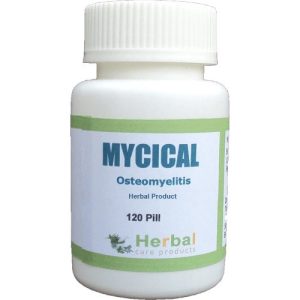No products in the cart.
Return To Shop 0 Cart $0.00 0
No products in the cart.
Return To Shop Shopping cart (0)
Subtotal: $0.00
Free shipping over 299$
Antibiotics for Osteomyelitis Treatment: How to Choose the Right Treatment
Osteomyelitis, a severe bone infection caused by bacteria, can be difficult to treat effectively. Antibiotics for osteomyelitis treatment play a crucial role in managing this condition, often serving as the primary therapy. Since osteomyelitis can vary in severity and cause, choosing the right antibiotic is essential for effective treatment and a successful recovery. How to select the best antibiotics for osteomyelitis treatment, key factors to consider, and what patients need to know to support their recovery journey.
Osteomyelitis
Osteomyelitis can develop in any bone and is often caused by bacteria like Staphylococcus aureus, which may enter the bone through the bloodstream, direct injury, or spread from a nearby infection. Symptoms can include pain, swelling, redness, and fever. If not treated promptly, osteomyelitis can lead to long-term bone damage or other serious complications.

Related Articles: The Top 5 Antibiotics for Treating Osteomyelitis: A Comprehensive Review
Antibiotic Treatment for Osteomyelitis
Selecting the right antibiotic for osteomyelitis treatment is vital since the infection requires targeted therapy to reach the bone tissue effectively. Given the complexity of the condition, healthcare providers often prescribe long-term antibiotic therapy, which may include both intravenous (IV) and oral antibiotics. Here’s a closer look at factors influencing the choice of antibiotic therapy.
Factors to Consider When Choosing Antibiotics for Osteomyelitis Treatment
- Type of Bacteria Involved
Identifying the specific bacteria responsible for the infection is a critical first step. Common bacteria causing osteomyelitis include:
- Staphylococcus aureus: The most common pathogen linked to bone infections.
- Streptococcus species and Pseudomonas aeruginosa: Often found in osteomyelitis resulting from open wounds.
- Escherichia coli: More common in cases of osteomyelitis originating from infections in other parts of the body.
A culture test of infected tissue helps identify the bacteria, guiding the choice of antibiotic and ensuring targeted therapy.
- Antibiotic Spectrum
Narrow-spectrum antibiotics target specific bacteria, while broad-spectrum antibiotics address a range of pathogens. A broad-spectrum antibiotic is often initiated in acute cases where the exact pathogen is not immediately identified. Once the bacteria type is confirmed, narrow-spectrum antibiotics are usually preferred to minimize resistance and potential side effects.
Related Articles: 7 Osteomyelitis Foods to Eat (and 3 to Avoid)
- Patient’s Age and Health Status
Patient-specific factors, such as age, immune status, and other health conditions, impact the choice of antibiotics. Children, for instance, often respond well to oral antibiotics, while adults may require a combination of IV and oral medications, especially if the infection is severe.
- Infection Location and Severity
The bone’s location can influence how antibiotics reach the infection site. Bones with limited blood flow may require longer or more potent therapy. Severe cases or chronic osteomyelitis may also demand extended treatment periods, often lasting weeks to months.
- Method of Administration: IV vs. Oral Antibiotics
- Intravenous Antibiotics: IV antibiotics are typically used initially for their ability to deliver high concentrations directly into the bloodstream, allowing faster access to the infected area.
- Oral Antibiotics: After initial IV therapy, patients often switch to oral antibiotics, especially for long-term management. Oral antibiotics are easier for outpatient care and ensure continued treatment with fewer hospital visits.
Commonly Prescribed Antibiotics for Osteomyelitis
Here are some antibiotics frequently prescribed for osteomyelitis:
- Vancomycin: Often used to treat Staphylococcus aureus infections, especially MRSA (methicillin-resistant Staphylococcus aureus).
- Ceftriaxone and Cefazolin: Effective against many gram-positive and some gram-negative bacteria; commonly used for broad-spectrum coverage.
- Levofloxacin and Ciprofloxacin: Often prescribed for gram-negative bacteria; they are used carefully due to possible side effects and resistance risk.
- Linezolid: An effective option for resistant strains but typically reserved for severe or complex cases due to potential side effects with long-term use.
Importance of Patient Compliance
For antibiotics to work effectively in osteomyelitis treatment, patients must adhere to the prescribed schedule without missing doses. Antibiotic resistance can develop if medications are not taken as directed, leading to recurrence and potential complications. Patients undergoing osteomyelitis treatment should:
- Follow all medication instructions closely.
- Attend follow-up appointments for ongoing monitoring.
- Report any side effects to their healthcare provider promptly.
Monitoring and Adjusting Treatment
Because osteomyelitis treatment often lasts several weeks, healthcare providers monitor patient progress closely, adjusting the treatment if necessary. Blood tests, imaging, and physical exams help assess the infection’s response to antibiotics. If the infection persists, additional tests may be performed to reassess the bacteria, and alternative antibiotics may be considered.
Preventing Osteomyelitis Recurrence
Once osteomyelitis treatment is complete, maintaining bone health is crucial to prevent recurrence. Patients should prioritize:
- Regular follow-ups, especially if they have a weakened immune system.
- Proper wound care to reduce the risk of bacterial entry.
- Managing chronic health conditions like diabetes, which can increase susceptibility to infections.
Conclusion
Choosing the right antibiotics for osteomyelitis treatment is a multifaceted process, requiring careful evaluation of the infection’s cause, location, and severity, as well as patient-specific factors. With the right antibiotics and a commitment to the prescribed treatment plan, most osteomyelitis cases can be effectively managed, allowing patients to recover and regain their quality of life. If you or someone you know is undergoing osteomyelitis treatment, consult your healthcare provider for tailored advice and ensure adherence to all treatment guidelines for the best outcome.
More
More

